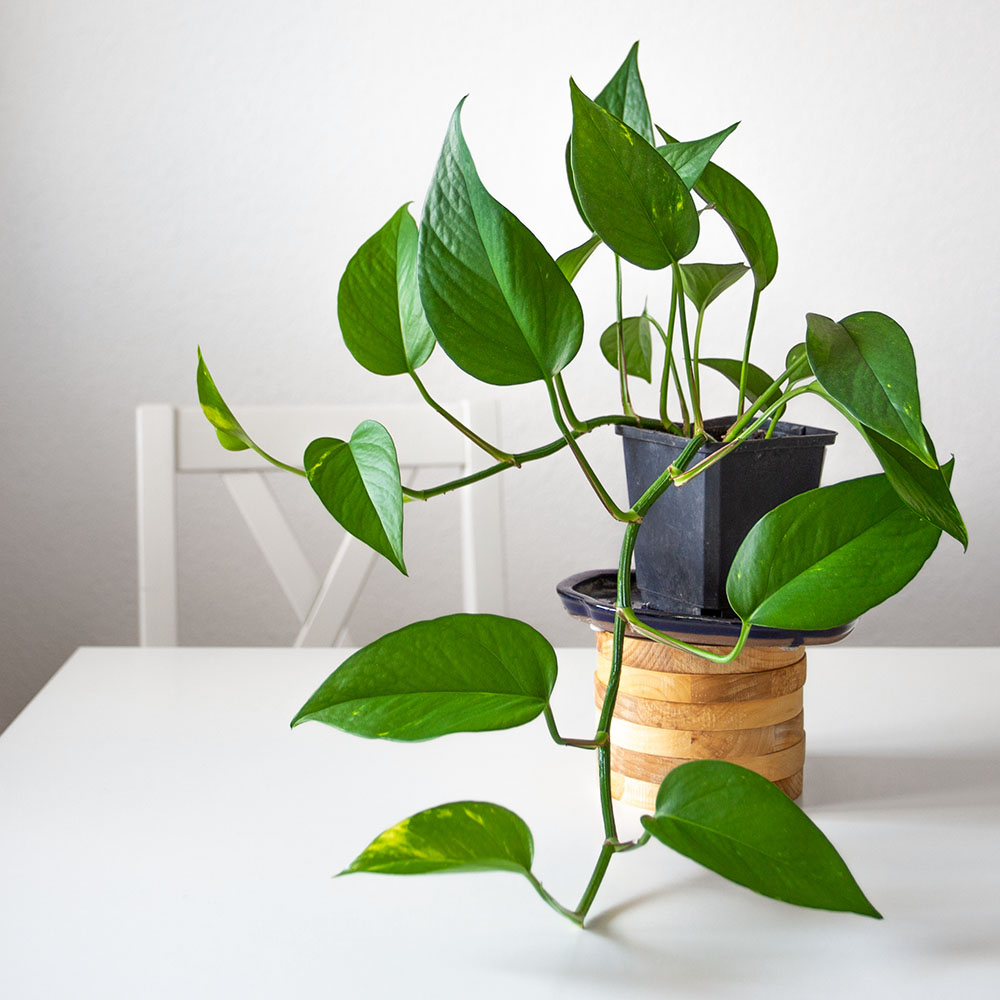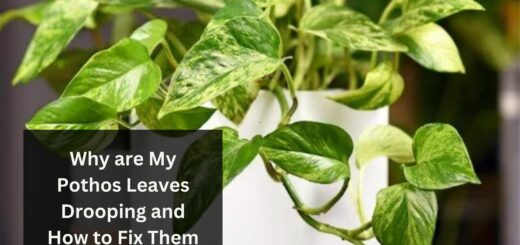Shangri La Pothos: How to Grow And Care for Sleeping Pothos
Are you looking to grow pothos but confused with the variety to grow? Hey folks! I am Anna Scott, a Gardener with 15 years of gardening experience. I am here to help you out with the best pothos to grow in your home garden.
Shangri la pothos is the best pothos addition to your collection. Another name for Shangri La Pothos (Epipremnum aureum) is golden pothos which produces yellow variegation. It is a rare plant that can tolerate any growing condition which makes them the best indoor plant. Shangri la pothos or sleeping pothos is a fun plant whose leaves remain unfolded and add a textured look to the plant. So are you ready to witness the easy-to-grow plant in your home garden?
Moreover, This plant tends to produce curled leaves that are glossy and green. Its vibrant foliage attracts everyone beautifully. Why not add this amazing variety to your houseplant magical collection? So, let’s gather more information regarding how to grow and care for Shangri la Pothos in detail.
Let’s begin this guide.

| Scientific name | Epipremnum Aureum |
| Other names | Shangri La, Sleeping Pothos |
| Native | Solomon Islands in the Pacific |
| Family | Araceae |
| Kingdom | Plantae |
| Growth zone | USDA 10b to 12 |
| Plant type | Vine |
| Growth size | 20–40 ft. long, 3–6 ft. wide |
| Growth rate | Moderate to fast |
| Leaves | Variegated |
| Flowering | Rarely flowers |
| Soil pH | Neutral to slightly acidic |
| Toxicity | Toxic to humans and pets |
| Common pests | Spider mites, Mealybugs |
| Diseases | Southern Blight, Bacterial Wilt Disease, Fungal Leaf Spot, Phytophthora Root Rot, Manganese Toxicity |
What is Shangri La Pothos?
Shangri La Pothos is a bred of golden pothos that produce green-colored leaves in the plant with yellow foliage that contrasts well with each other.
It is famous for its appealing appearance, so it is suggested to grow this variety to enjoy benefits. It produces wrinkle leaves in the plants that are somehow rolled up.
They look like cooked spinach leaves which are also called spinach pothos. This variety is also known as sleeping pothos. It is because Its leaves seem sleepy, rather than fully awake and open.
Some Gardner also called it as Godzilla Pothos because its upward-pointing leaves look like Godzilla. Last, but not least, being a rare plant, It is famous for its unique variegation.
How to Grow Shangri La Pothos In Your Garden?
As mentioned propagation of Shangri La Pothos can be done easily, so let’s know the procedure of doing so. After growing the Shangri La Pothos in your garden, you can take advantage of the most amazing plant. Follow the below steps:

Step 1- First, cut the stem of the Shangri La Pothos leaves from the existing plant about 3 inches long.
Step 2- Now, attach that stem (cutting) to any glass of water.
Step 3- Choose the place where your cutting will receive indirect sunlight. Place them there.
Step 4- By having a check on whether the roots are coming from or not, Change the water every day so that no disease can take place.
Step 5- When you see the roots are coming, this will take a few weeks.
Step 6- Then you have to put the cutting in the soil.
Step 7- Last but not least, take proper care of them so that they grow at their best and give you the desired outcome. Water them regularly unless they get fully matured.
This is how you are done with the process of growing the Shangri La Pothos from cuttings. But you need to maintain them properly so let’s jump to know about the caring tips for Shangri La Pothos in detail.
How to Care for Shangri La Pothos In Your Garden?
Caring for Shangri La Pothos is important as it helps in generating bushy foliage in the plant. So follow the below caring tips for your plant to receive amazing results from it. Let’s move forward:
Location
- One of the main things to keep in mind is to provide a better location for the plant, where it receives bright, indirect sunlight to grow.
- Place the plant near the east-facing window to make it grow healthy.
- Let the morning sunlight reach the plant to generate its food (Note: It will not burn the foliage).
- Lastly, it helps the plant to produce bushy foliage in the plant that attracts everyone.
Soil
- It requires well-drained soil to grow. Dont just simply use the normal hardened soil for the plant.
- Moreover, make use of coarse sand, compost, and peat moss to add more nutrients to the soil, which helps the plant to grow at its best.
- Well-drained soil will help retain the excess water from the soil, which will reduce the risk of waterlogging.
Watering
- Water is a vital source that helps the plant to grow healthy. This plant requires moderate water to survive.
- If it receives an excess supply of water, then it causes root rot in the plant, which slowly ruins the growth of the plant.
- Keep the soil dry before watering and check the moisture by inserting the finger inside the soil about 2 inches deep.
- If the soil is damp, then you can not water the plant, but if it is dry, then is the right time to water the plant.
- Keep in mind to keep the gap between waterings. Water the plant around the base as the soil will soak the water properly.
Humidity
- One of the caring tips for the Shangri La pothos is the preferred humidity level.
- Being a tropical plant, it likes to grow in a humidity level that lies between 50% to 70%.
- If there is a lack of humidity in the area, then you can make use of a pebble tray by filling it with water to increase the humidity in the plant.
- Also, you can mist the foliage for about one time in a week to keep the level of humidity up.
- Last, but not least if it is too dry in your area, then you have to invest in a humidifier that will balance up the things for you.
Temperature
- The ideal range of temperature that is required by this plant lies between 60°F to 85°F or 15°C to 30°C.
- This plant is required to grow in a warm climate to moderate climate, which is its native habitat.
Fertilizer
- Fertiliser helps in providing a good amount of nutrients to plants so that the plant remains healthy.
- Though it is not a heavy feeder without any extra feed, it will grow. If you are feeding it with good-quality soil.
- Although you can make use of balanced liquid fertilizer for the plant.
- Fertilize the plant after every 4 to 7 weeks to keep it healthy.
- Make sure to read the instructions written on the label for dosage to boost the growth of the plant.
Pruning
- Being a fast-growing plant, it will grow longer in your area. So you have to prune them on time.
- Pruning is required by every plant to maintain a healthy shape and size, the same is with this plant.
- Prune off the plant so that all the dead and decayed leaves are removed from the plant.
- Make use of sharp and sterilized scissors for pruning the plant it will help in preventing infections.
- Also, Prune the stems so that the plant remains small, and it will create a bushy appearance of the plant.
Pests and Diseases
- This plant is pest-free or disease free but it may lead to some bacterial diseases. If you do not care for the plant properly.
- Some bugs like spider mites, aphids, and mealybugs tend to attack the plant to suck its fluid and satisfy their hunger.
- So, prevent them by either hand-picking them or spraying use of spray with water.
Repotting
- Last, but not least, Repot the plant when it becomes root-bound. It means that when the plant is outgrown and its roots are coming out from the drainage holes.
- How often will depend on the growing capacity of the plant? Below are the signs of rootboundness in the plant; if you see so, you have to repot the plant, such as; Stunt growth in the plant, The plant looking unhealthy, Roots coming out from the drainage holes, Roots swirled inside the pot, etc.
- When you repot the plant, make use of sharp, sterilized scissors for the reporting of the plant.
- Also, you have to choose the pot, that is one size bigger than the current pot.
- Choose a fresh potting mix for the plant. Remove excess soil from the roots at the time of repotting.
- The container should have a good amount of drainage holes.
- Last, but not least, keep in mind to repot the plant when the plant is actively growing in the spring and summer seasons.
Summing up the context
In this guide, you come to know that Shangri la pothos is the best pothos addition to your collection. Another name for Shangri La Pothos (Epipremnum aureum) is golden pothos which produces yellow variegation. It is a rare plant that can tolerate any growing condition which makes them the best indoor plant.
Shangri la pothos or Sleeping pothos is a fun plant whose leaves remain unfolded and add a textured look to the plant. So are you ready to witness the easy-to-grow plant in your home garden? If yes, then read the whole guide properly. I will come back with another informative guide for you all soon.
Thanks for reading! Happy gardening!
FAQs
Is sleeping pothos rare?
Yes, the sleeping pothos are a rare variety that is expensive to purchase and difficult to find. It is considered as an evergreen perennial that produces curled foliage in the plant.
How do pothos grow fast?
The growth of the pothos will depend on the variety that you have grown in your garden area. Moreover, if you feed the variety with a good amount of nutrients, like proper sunlight, water, humidity, and temperature, then it helps the plant to grow at a faster pace.
What is the best fertilizer for pothos?
The best fertilizer for the pothos is the NPK fertilizer which helps the plant to expand its lifespan by providing it a good amount of nutrients to grow.




